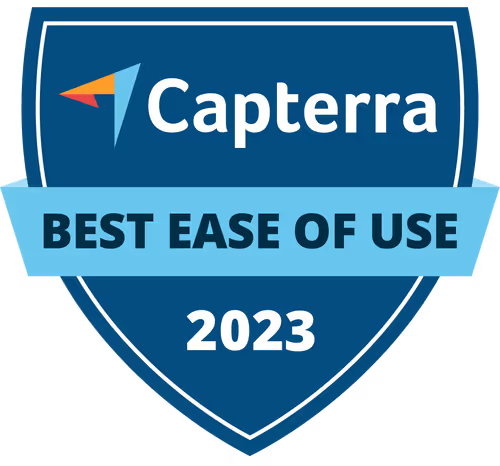What Are ABA Session Notes and Why Do They Matter?
ABA session notes are detailed written summaries of what happens during an Applied Behavior Analysis (ABA) therapy session. These notes, often written by RBTs and reviewed by BCBAs are a critical part of ABA documentation, capturing targeted goals, interventions used, client responses, barriers to progress, and plans for next steps.
High-quality session notes serve multiple purposes: they help track client progress clinically, maintain accurate and ethical records, and provide the proof of service insurance companies require for reimbursement. Because they’re so important, having clear ABA session note examples can guide both new and experienced clinicians in meeting compliance standards while writing effective notes.
Why ABA Session Notes Matter for Parents, Caregivers, and Clinicians
ABA session notes aren’t just paperwork - they’re an essential tool for everyone involved in therapy. For clinicians, detailed RBT and BCBA session notes ensure accurate ABA documentation, track progress over time, and provide compliance for insurance and medical records. They allow professionals to make data-driven decisions about treatment plans, adjust interventions, and demonstrate medical necessity when needed.
For parents and caregivers, session notes provide a clear view into what happens during therapy. Instead of vague updates, families can see which goals were addressed, how their child responded, and what strategies worked best. This helps them reinforce skills at home, stay engaged in the therapy process, and celebrate progress alongside the clinical team. When clinicians and families both rely on consistent, high-quality session notes, it creates stronger collaboration and better outcomes.
ABA Session Note Examples
Why Objective Notes Matter
Vague: “Client did great today!”
Objective: “Client completed 14/15 trials of ‘imitate gross motor actions’ independently.”
Here are three realistic examples for different ABA contexts:
Example 1: DTT (Discrete Trial Training) Session Note
Date: 07/17/2025
Therapist: J. Smith, RBT
Client: A.J., Age 5
Session Duration: 2 hours
Goal Targeted: Imitate two-step gross motor actions
Objective: DTT implemented to teach imitation. Materials: picture cards, toys. Client attempted 20 trials.
Intervention: Gestural and verbal prompts provided as needed.
Response: 16/20 correct (80%) with minimal prompts.
Reinforcement: Edible reinforcement delivered after correct responses.
Plan: Continue same goal, reduce prompts to independent responding.
Example 2: NET (Natural Environment Teaching) Session Note
Date: 07/17/2025
Therapist: S. Lee, RBT
Client: K.M., Age 6
Session Duration: 1.5 hours
Goal Targeted: Manding for preferred items using 3-word phrases
Objective: Embedded mand trials during play with blocks and cars.
Intervention: Echoic prompts faded to gestural over the course of the session.
Response: 10/12 opportunities (83%) successful.
Reinforcement: Access to preferred toy after specific pre-determined mand.
Plan: Increase distance between therapist and items to promote independence.
Example 3: Behavior Reduction Session Note
Date: 07/17/2025
Therapist: L. Brown, RBT
Client: T.J., Age 7
Session Duration: 2 hours
Goal Targeted: Reduce aggression during transitions
Objective: Used visual schedule and transition countdown.
Intervention: Implemented non-contingent reinforcement and differential attention for maladaptive behaviors.
Response: Aggression occurred 1 time during 4 transitions (75% reduction).
Reinforcement: Praise and access to preferred music.
Plan: Continue with visual aides and gradual increase in transitions to promote practice transitioning.
Types of ABA Session Notes
Not all ABA session notes serve the same purpose. Different types of documentation are used depending on who is writing them and what they’re intended for:
- Daily Session Notes (RBTs): Written by Registered Behavior Technicians after each therapy session, these notes capture goals targeted, interventions used, client responses, and next steps. They are the most frequent type of ABA session notes.
- Supervision Notes (BCBAs): Created by Board Certified Behavior Analysts during or after supervision sessions, these notes focus on treatment fidelity, staff performance, and clinical recommendations. They ensure quality oversight and guide RBTs in delivering effective therapy.
- Progress Notes (Monthly/Quarterly): These are higher-level summaries written by BCBAs that compile data across multiple sessions. Progress notes are often required for insurance, school districts, or other funding sources to demonstrate outcomes and justify continued services.
What Are the Main Components of ABA Session Notes?
Strong notes typically include:
- Client & Session Info: Name/initials, date, time, duration
- Goals Addressed: Clearly stated treatment goals that are objective
- Interventions Used: DTT, NET, prompting strategies, etc.
- Client Response: Measurable data (for example, 80% correct)
- Reinforcement Provided: Type and schedule
- Plan for Next Session: Continue, modify, or fade procedures and programming
- Signatures: RBTs, BCBAs, and some session notes require parents’ signatures (when required).
Quick Checklist:
☐ Session details
☐ Objective language
☐ Percentages/data
☐ Plan for next steps
What Are the Requirements for ABA Session Note-Taking?
To stay compliant and ensure accurate ABA documentation, both RBT session notes and BCBA session notes must meet specific requirements:
- Timeliness: Complete all ABA session notes within 24–72 hours of the session to keep records accurate and up to date.
- Compliance: Notes must align with payer guidelines, insurance requirements, and HIPAA standards.
- Retention: According to the BACB, session documentation should be securely stored for at least 7 years.
- Signatures: Depending on the service, signatures may be required from the RBT, supervising BCBA, and in some cases, caregivers.
- CPT Codes: Ensure the CPT code matches the service provided and reflects the correct session length for billing purposes.
Best Practices & Common Mistakes in ABA Session Notes
How to Write Effective ABA Session Notes
Before the Session
- Look over the goals and any past notes
- Get everything ready to conduct programs and collect data
During the Session
- Write short, clear notes as things happen
- Record objective data on behaviors/targets for skill acquisition and behavior reduction
- Don’t use opinions (ABA Session Notes Examples & Templates for RBTs & BCBAs)
SOAP Note Template for ABA
SOAP = Subjective, Objective, Assessment, Plan
This structure helps you organize clinical notes clearly and is widely accepted by insurance and medical providers.
Template:
S (Subjective):
Notes on client’s condition or caregiver reports. Example: “Caregiver reported client had trouble sleeping last night.”
___________________________________________________________
O (Objective):
Factual, measurable observations from the session. Example: “Client completed 10/12 manding trials with minimal prompts. Aggression occurred once during cleanup.”
___________________________________________________________
A (Assessment):
Professional interpretation of progress or challenges. Example: “Progress consistent with previous session; sleep may impact attention.”
___________________________________________________________
P (Plan):
Next steps for treatment or modifications. Example: “Continue manding goal; adjust reinforcement schedule if fatigue persists.”
___________________________________________________________
Conclusion
High-quality ABA session note examples are important for keeping track of progress, following rules, and getting paid. With the examples and easy-to-use SOAP template here, you can make writing your notes faster and still get them right.
Utilize the SOAP note template, or check out tools like Theralytics that make ABA documentation easier. That way, you’ll have more time to focus on what really matters, helping your clients!
Disclaimer:
The information provided in this blog is for general informational and educational purposes only. While we aim to offer helpful guidance on writing ABA session notes, this content does not constitute legal, billing, or clinical compliance advice. Each payer may have specific documentation requirements, and it is your responsibility to verify those requirements with the appropriate funding source or governing body. We do not guarantee audit outcomes, and we are not liable for any issues that may arise from the use of this information.








.avif)
















